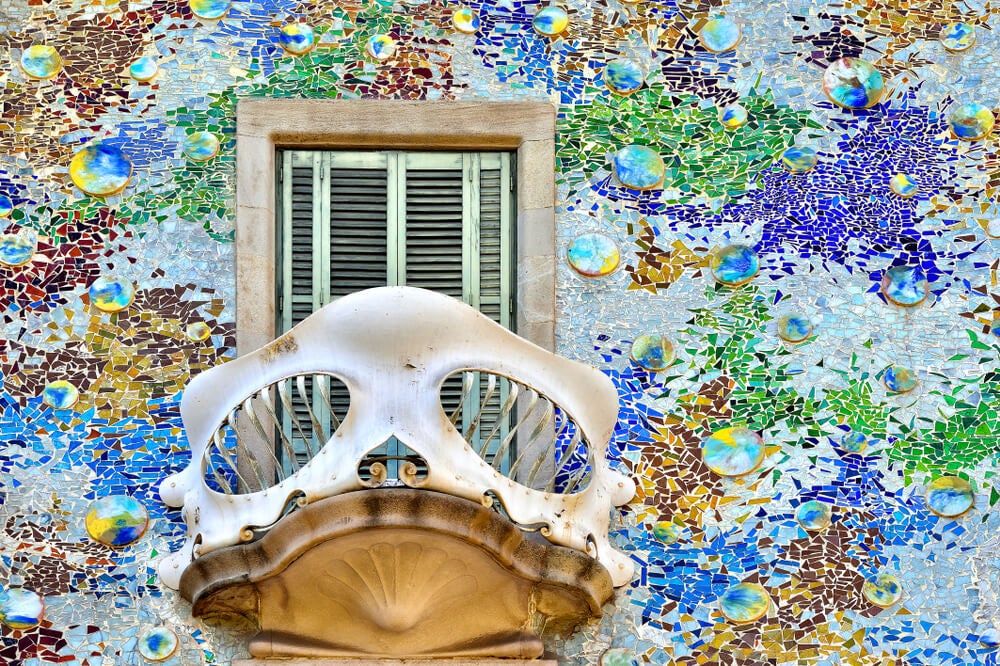Antoni Gaudi was one of those men who can be called “geniuses” with all the letters. More than an architect, he was a complete artist who gave a blunt demonstration of his genius and sensibility in each of his works.
His style is unique and incomparable. Not by chance, eight of his works are currently listed as a World Heritage Site.
- Gaudí had three great passions throughout his life: nature.
- Art and religion; has dedicated the best of his talent and skills to each of these areas; however.
- He had virtually no personal life.
- As he was fully committed to his work and convictions.
“Architecture is the first plastic art; sculpture and painting need it. All its excellence comes from light. Is architecture the organization of light?. ?Antoni Gaudi?
Although his particular way of seeing architecture was highly appreciated in his day, Antoni Gaudi’s true consecration came after his death.
Today, he is considered one of the most important architects of all time and his work is the subject of research and studies around the world.
One of the most striking aspects of Antoni Gaudí’s life is that he was born into a family with a long artisanal tradition.
At least five generations before him he had worked in the manufacture of copper products. His father and two grandparents were boilers and made barrels for the distillation of grapes in Tarragona.
Gaudí has shown time and time again that the visions of these great objects during his childhood had accustomed him to designing the world in three dimensions, for him rigid materials and large figures can always be malleable, he applied this unique concept to his architecture.
It is unclear whether Antoni Gaudí was born in Reus or Riudoms, he himself claimed to have come from place to place throughout his life, but what is known is that he was born on June 25, 1852 and that his health was so fragile that they decided to baptize him the next day, so that he would not die.
Throughout his childhood he was always ill, which made him an introverted and silent child, but also a great observer of nature.
Its architecture has always wanted to imitate the natural. For this reason, he preferred the curves of the real world to the straight lines of the drawings, which marked his incomparable style.
His family moved to Barcelona and in 1874 Antoni Gaudi entered the school of architecture, that same year he made his first drawings and immersed himself in the study of architectural works of different cultures.
In 1876 his mother, 57, died and his brother Francisco, 25, a recent graduate as a doctor, was a blow to Gaudí, and has since begun working as a part-time designer, to supplement the payment of his studies.
Three years later Rosa, the only surviving sister, died, had a daughter and Gaudí took care of her. That same year he met Eusebio Goell, who would become his great friend and patron, and his reputation as an architect was beginning to grow.
Antoni Gaudi fell in love with a single woman during his life, the luckiest was Pepeta Moreu, an embroiderer who wrote to say that the banner of the Workers’ Cooperative Mataronense, commissioned by the architect, was very difficult to manufacture.
When he met her in person, he fell in love, since then he has arrived on time every Sunday at Pepeta’s, he was with his little niece Rosa.
However, when Pepeta finally proposed, he rejected it. Antoni Gaudi was not exactly a monument to elegance, quite the opposite. They say Pepeta said he couldn’t accept a man who “wears a moustache full of snot. “
At this time, in 1883, the construction of his masterpiece began: the Sagrada Familia also became a hermit, increasingly mystical and increasingly devoted to his work, went several times a day to Mass and fasted so strictly that he often put his health at risk.
He also suffered the death of his father, niece and great benefactor, Eusebio Goell, which further sank him in his religious beliefs.
In addition, in 1926 he was hit by a car, his appearance as a beggar led to him being taken to a hospital for the homeless, he died three days later and all of Barcelona lamented his death.

